Koningstunnel, the Hague
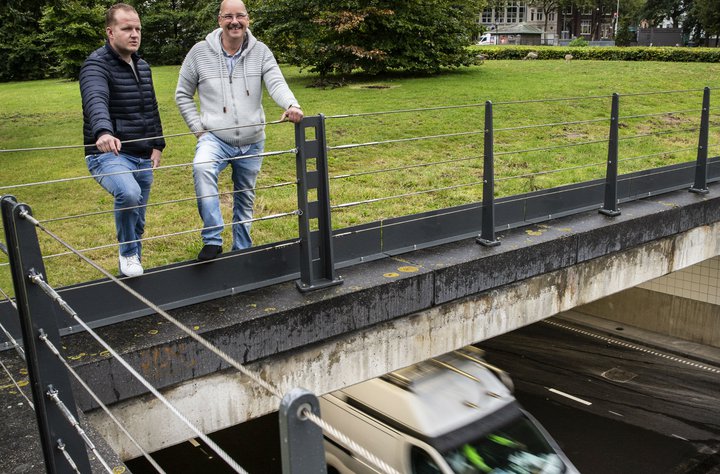
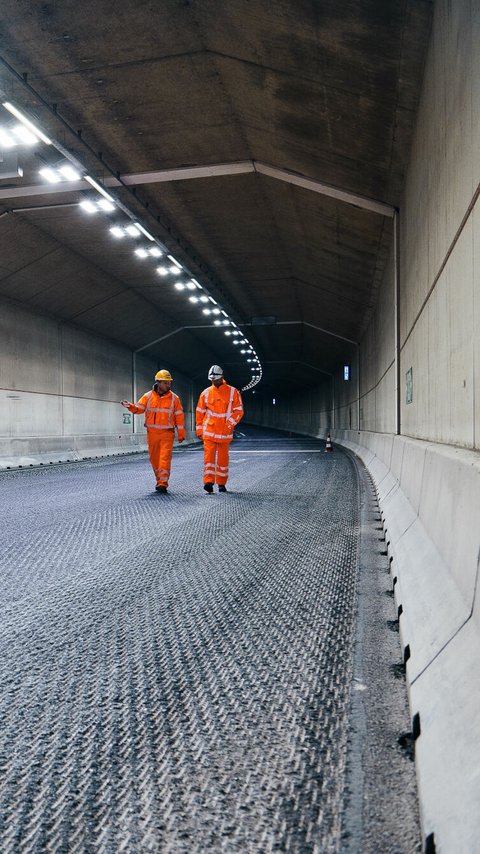
Deep under the Amsterdam-Rhine Canal, 250 people work on the Piet Hein tunnel every day. The 25-year-old tunnel was in need of a thorough overhaul. Project managers Jeffrey van Korlaar and Arnoud op den Kelder talk about how they made the 1,500-metre-long traffic tunnel in the heart of Amsterdam safe and future ready during a pandemic.
“Developments in tunnel land are moving at lightning speed,” says Jeffrey van Korlaar, zooming through the tunnel tube on a yellow electric scooter. “I like to compare them to mobile phones. Twenty years ago, all you could do was make phone calls; now your mobile phone is an extension of your computer. The same applies to tunnels. To meet today’s safety requirements, a modern tunnel is chock full of sophisticated technical systems. In the old Piet Hein tunnel, antique bakelite telephones with a rotary dial still hung in the emergency cabinets, and the control rooms contained incredibly heavy tube televisions.”
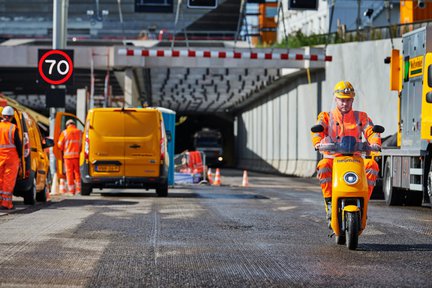
Amsterdam’s traffic tunnels are operated, monitored and controlled in a number of ways, adds Arnoud op den Kelder of the Amsterdam municipality. “Some with a mouse and others with a touchscreen. This makes the renovation task complex, which is why we set up the Road Tunnels programme. The aim is to create a uniform usage and renovation manual or blueprint for our tunnels. Eventually, the tunnels will all be controlled in the same way, with the Piet Hein tunnel being the standard and starting point.”
In 2019, municipal tunnels had to comply with new national tunnel legislation. Even back then, the Piet Hein tunnel no longer complied. Arnoud: “Closing the tunnel immediately was not an option, as we didn’t have a contract with a construction company at that time. To keep the tunnel open until renovation, the municipality took a number of measures, including a ban on trucks.”
To carry out the renovation work, the municipality of Amsterdam signed an alliance contract with the Yunex/Heijmans consortium. The design process started in April 2020, but not much later the Covid-19 pandemic broke out. “We lost a lot of precious time because of Covid," Arnoud continues. “We were sitting at home at our laptops for almost two years. Establishing effective cooperation within an alliance organisation is important and that was suddenly very difficult. The specific requirements for developing the unified and integrated control and operation system were only introduced later, during the design process.”
By the end of June 2021, a plan was in place and the tunnel was closed for renovation work. Covid-19 continued to trouble the team. Jeffrey: “In the large tunnel tubes, keeping a distance wasn’t a problem, but in the tight spots above the escape area, where all the cables and the like run, you can hardly stand up straight, let alone keep your distance.”
In addition to Covid-related regulations, the construction team also had to take into account the IJ tram, which passes through the Piet Hein tunnel via its own tunnel tube. The number 26 tram line connects the city centre with IJburg and the tram had to keep running. This requirement was a major headache for the construction team during the design phase. “Almost all the technical and safety installations of the three tubes were intertwined,” Jeffrey explains. “We had to find a way to unravel the tangle of systems. For one, we didn't know if the tram could keep running if we disconnected the traffic tubes from the tram tube. Plus, in the event of a calamity in the tram tube, passengers needed to be able to escape via the southern car tube.” Another big surprise was the lack of documentation on the many kilometres of cabling running through this tunnel. “We spent months trying to discover which cables belonged to which installation,” says Arnoud.
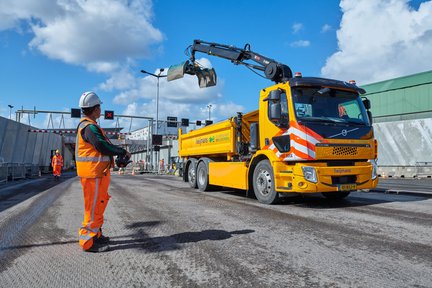
Covid-19 also had its advantages. During the first 12 months, there was significantly less traffic on the road and the much of the expected disruption to residents and businesses failed to materialise. Normally, about thirty thousand vehicles pass through the tunnel every day.
Closing something as important as a city centre traffic tunnel is not something you do lightly. Before the renovation could start, the alliance drew up a mobility plan for alternative transport solutions for local residents. Arnoud: “In addition to two diversion routes, people were given access to electric shared scooters and bicycles. We also gave local residents the opportunity to share their questions and complaints with us via a special sounding board group. And we organised numerous tours of the tunnel. These measures earned us a lot of sympathy.”
Among other things, local residents got to see the work on the concrete work and grouting. Due to a leaking grout joint, three cubic metres of water per hour were flowing into the tunnel. Jeffrey: “This problem had been around for some time and we were finally able to fix it properly. Furthermore, we replaced a total of more than 50 technical systems. These included ventilation and traffic information systems, extinguishing facilities, cameras and public address systems. We also installed new software and laid a state-of-the-art communication network. We enhanced fire safety by adding an extra layer of fire-resistant cladding to parts of the tunnel wall, and the steel crossed support construction above the entrance and exit has been completely replaced with a concrete variant. Furthermore, we renewed the steel doors of the escape corridor and the escape route markings.”
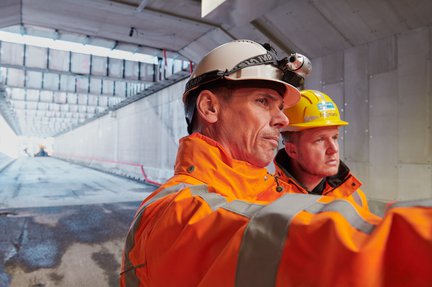
Thanks to the generic renovation and operation manual, the municipality will not have to keep reinventing the wheel in the future. This means that any upcoming renovation projects can get started more quickly. Jeffrey does sound one minor note of caution on this way of working. “Every tunnel has its specific characteristics, so you can’t copy the design of, say, the Piet Hein tunnel one-to-one to the Arena tunnel. It is a matter of fine-tuning per tunnel.”
The municipality's management organisation also benefits from the blueprint. Thanks to a 3D Building Information Model (BIM) and a Digital Tunnel Twin, thick binders of design drawings are a thing of the past. “Using BIM, we built a digital model of the tunnel with all the important technical components. In the Digital Tunnel Twin, we can test almost everything, except a number of aspects you cannot simulate, such as water pressure and air pressure.”
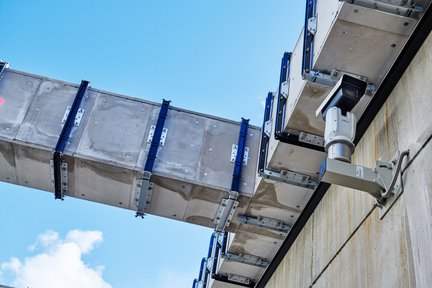
Another advantage is that future major maintenance work will not require the tunnel to be completely closed. Arnoud: “We can work in sections from now on. For example, you can replace all cameras or public address systems in just a few nights after first testing their operation in the digital environment.”
Not long now and motorists will be whizzing through the tunnel again. The construction team is now testing all the technical installations and getting ready for an emergency drill. Arnoud: “The tunnel will soon be able to withstand another 25 years. The Piet Hein tunnel renovation was a project within a large-scale programme during a global pandemic. That’s why I’m so proud of what the team achieved!”